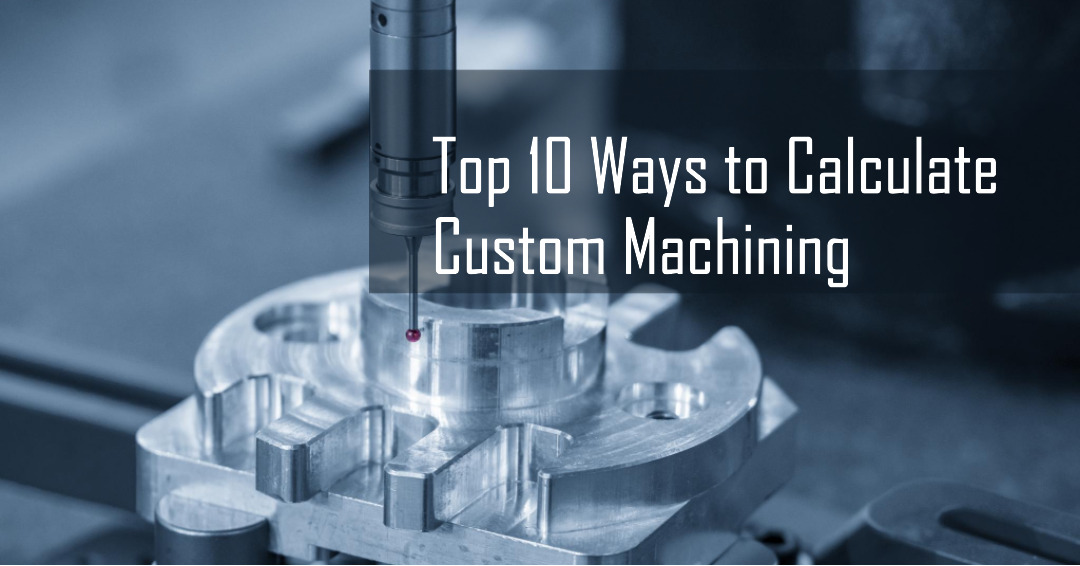Calculate Custom Machining Using the Top 10 Ways
Custom machining plays a crucial role in various industries, providing precision and specialized manufacturing solutions for unique projects. Whether you are a business owner or an engineer, it is essential to have a clear understanding of how to calculate the cost of custom machining accurately. In this article, we will explore the top 10 ways to calculate custom machining costs, enabling you to make informed decisions and optimize your manufacturing processes.
1. Define Your Project Requirements
The first step in calculating custom machining costs is to clearly define your project requirements. This includes determining the complexity, size, and material specifications of the parts or components you need to be machined. By having this information upfront, you can accurately estimate the time and resources required for the project.
2. Identify the Machining Processes
Once you have defined your project requirements, the next step is to identify the specific machining processes involved. Custom machining encompasses various techniques such as milling, turning, drilling, grinding, and more. Each process requires different tools, equipment, and expertise, which can impact the overall cost. By understanding the specific machining processes required, you can better estimate the associated expenses.
3. Material Selection and Sourcing
Selecting the right material for your custom machining project is vital. Different materials have varying costs, availability, and machining characteristics. Consider factors such as strength, durability, and specific industry requirements when choosing the material. It is also essential to source the material from reliable suppliers to ensure quality and consistency.
4. Labor Costs and Expertise
Labor costs are a significant component of custom machining expenses. The complexity of your project, the number of skilled operators required, and the experience level of the machining team all contribute to the overall labor costs. It is crucial to work with reputable machining service providers who have skilled professionals capable of handling your specific requirements.
5. Machine Utilization and Efficiency
Optimizing machine utilization and efficiency is essential for calculating custom machining costs accurately. Idle machine time and inefficient workflows can drive up expenses. Ensure that the machining processes are streamlined, and the machines are utilized to their full potential. This can help minimize production time and reduce overall costs.
6. Tooling and Equipment Costs
Different custom machining projects may require specialized tooling and equipment. These tools need to be factored into the cost calculation. The cost of tooling and equipment can vary based on the complexity of the project and the specific machining processes involved. Working closely with your machining service provider can help you determine the tooling and equipment requirements and associated costs.
7. Quality Control Measures
Maintaining high-quality standards is crucial in custom machining to ensure the precision and accuracy of the final products. Implementing proper quality control measures, such as inspections and testing, is essential. While quality control adds to the overall cost, it helps avoid expensive rework or rejection of the machined parts, ultimately saving time and money.
8. Post-Machining Operations
In some cases, post-machining operations may be required to achieve the desired final product. These operations could include finishing, coating, assembly, or packaging. It is essential to consider these additional processes when calculating custom machining costs. Discuss with your machining service provider to determine the specific post-machining operations required and their associated expenses.
9. Quantity and Lead Time
The quantity of parts required and the lead time for production can significantly impact custom machining costs. Generally, producing a larger quantity of parts reduces the per-unit cost due to economies of scale. However, expedited production and shorter lead times may incur additional charges. It is crucial to carefully consider your production requirements and plan accordingly to optimize costs.
10. Get Quotes and Compare
Finally, to accurately calculate custom machining costs, it is recommended to obtain quotes from multiple machining service providers. This allows you to compare pricing, capabilities, and lead times to find the best value for your project. By exploring multiple options, you can make an informed decision and ensure that you receive competitive pricing without compromising on quality.
In conclusion, calculating custom machining costs requires attention to detail and a thorough understanding of various factors. By following the top 10 ways mentioned above, you can accurately estimate the expenses involved in your custom machining project. Remember to define your project requirements, identify the machining processes, consider labor and equipment costs, implement quality control measures, and obtain multiple quotes. By leveraging these strategies, you can optimize your manufacturing processes, reduce costs, and ensure the successful completion of your custom machining project.
This article has been generated using AI technology. While efforts have been made to ensure the accuracy of the content, it should not be considered as professional or financial advice. It is always recommended to consult with experts in the field for precise cost calculations and project evaluations.
FAQ
1. Why is it important to define project requirements when calculating custom machining costs?
Defining project requirements helps accurately estimate the time and resources required for the project.
2. How does material selection impact custom machining costs?
Different materials have varying costs, availability, and machining characteristics, which can affect the overall cost of custom machining.
3. What factors contribute to labor costs in custom machining?
The complexity of the project, the number of skilled operators required, and the experience level of the machining team all contribute to labor costs.
4. Why is machine utilization and efficiency important in calculating custom machining costs?
Optimizing machine utilization and efficiency helps reduce idle machine time and inefficient workflows, which can drive up expenses in custom machining.

